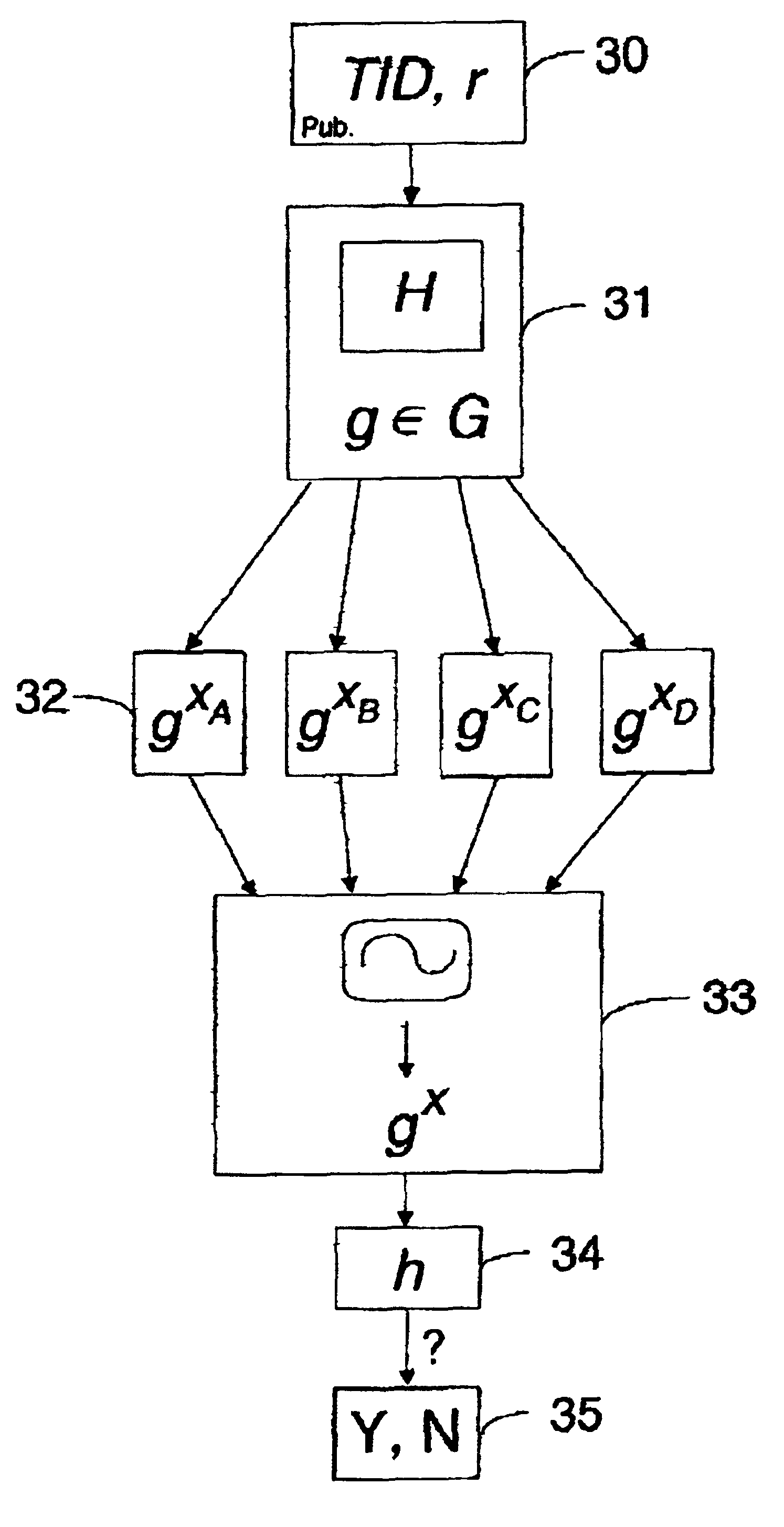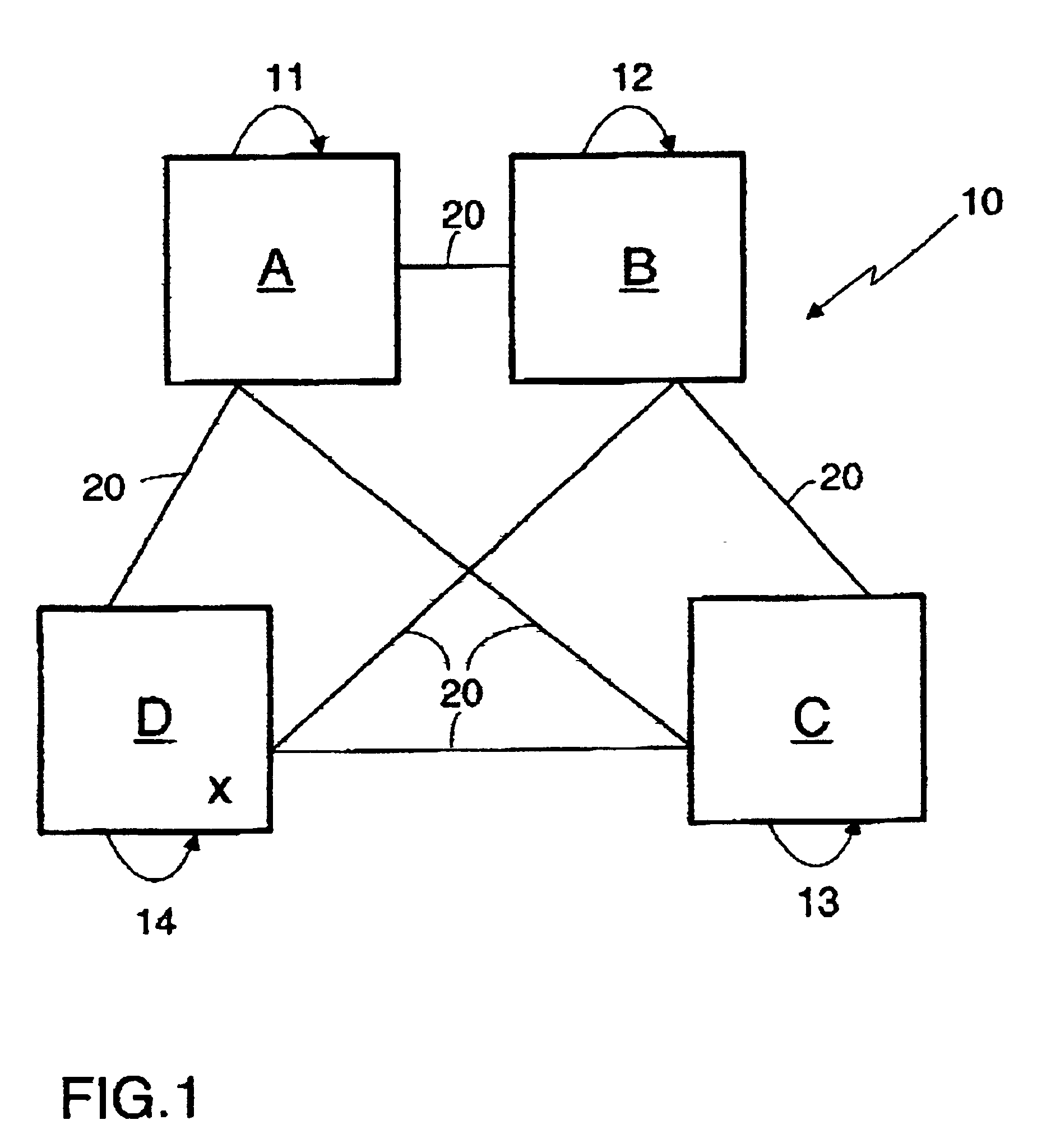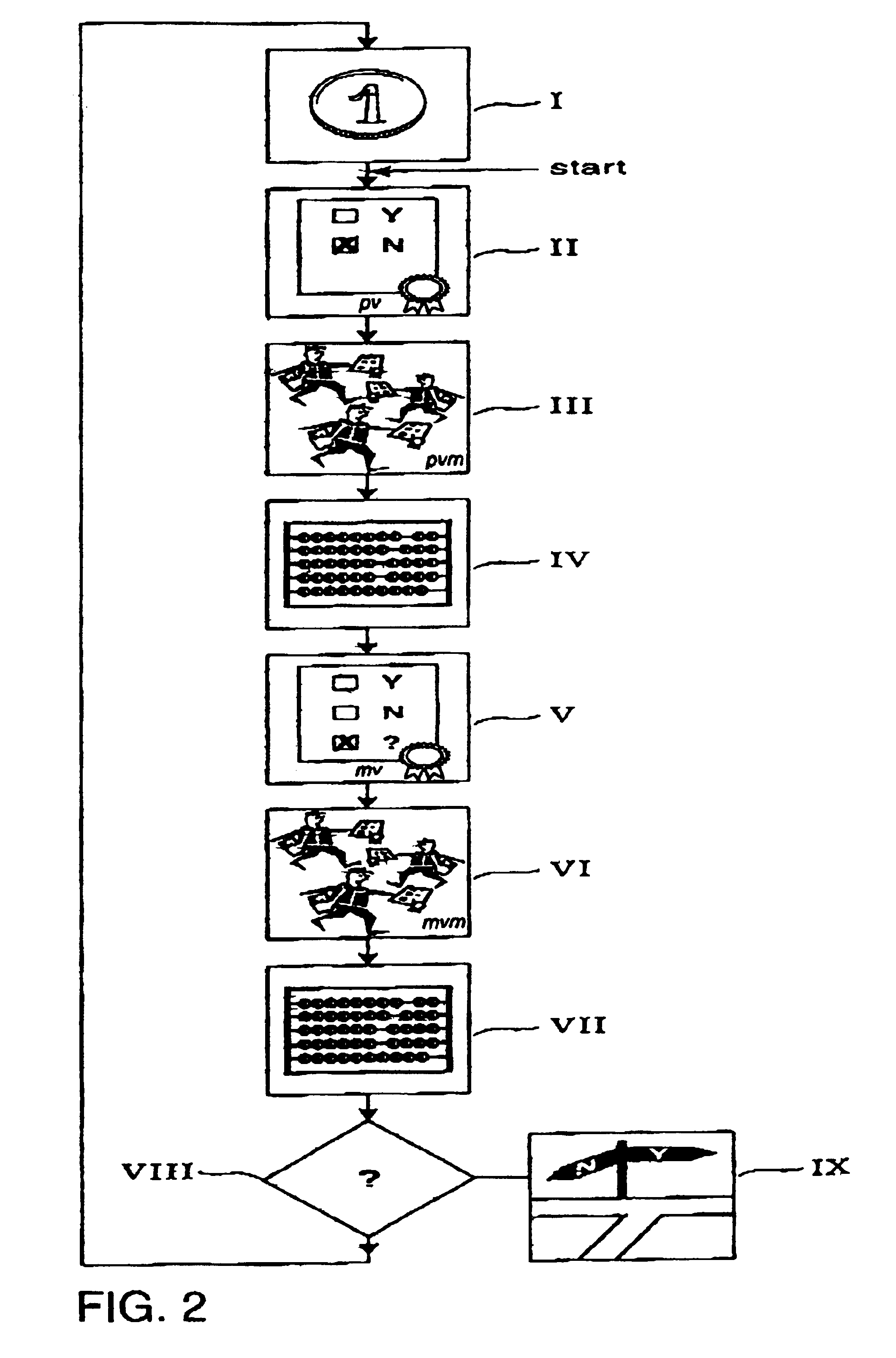Method of achieving multiple processor agreement in asynchronous networks
a technology of asynchronous networks and processors, applied in the field of network, can solve the problems of impracticality of protocol and time-outs for implementation of failure detection devices, and achieve the effects of increasing efficiency, reducing the size of used messages, and increasing either security or efficiency
- Summary
- Abstract
- Description
- Claims
- Application Information
AI Technical Summary
Benefits of technology
Problems solved by technology
Method used
Image
Examples
Embodiment Construction
[0063]The present method for achieving Byzantine Agreement uses unforgable, transferable signatures to allow parties or participating network devices to justify their messages, which limits the possibilities of an adversary. Furthermore, a strong common coin is applied, i.e., every party is guaranteed to get the same result out of a common-coin subprotocol with all but negligible probability. Furthermore, by using suitable threshold signatures, the message size stays independent of the number of parties involved. If a reliable broadcast is applied, then signatures can be omitted at the cost of more communication.
[0064]The method for achieving Byzantine Agreement comprises a vote part which can be divided into a pre-vote part and a main-vote part, a decision part and a part where a cryptographic coin, herein referred to as coin, is cast.
[0065]FIG. 1 shows an example of a common computer system 10 consisting of four participating network devices A, B, C, D, which are connected via com...
PUM
 Login to View More
Login to View More Abstract
Description
Claims
Application Information
 Login to View More
Login to View More - R&D
- Intellectual Property
- Life Sciences
- Materials
- Tech Scout
- Unparalleled Data Quality
- Higher Quality Content
- 60% Fewer Hallucinations
Browse by: Latest US Patents, China's latest patents, Technical Efficacy Thesaurus, Application Domain, Technology Topic, Popular Technical Reports.
© 2025 PatSnap. All rights reserved.Legal|Privacy policy|Modern Slavery Act Transparency Statement|Sitemap|About US| Contact US: help@patsnap.com



